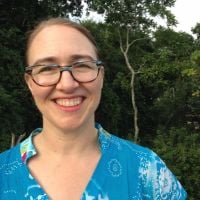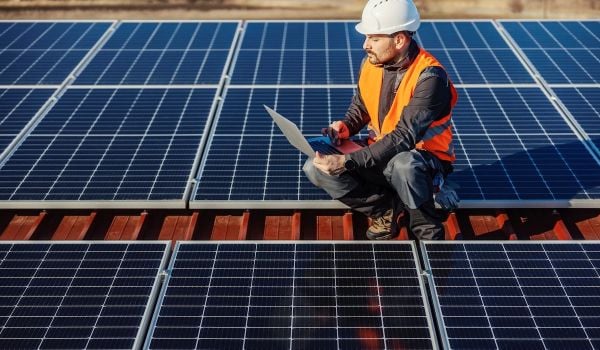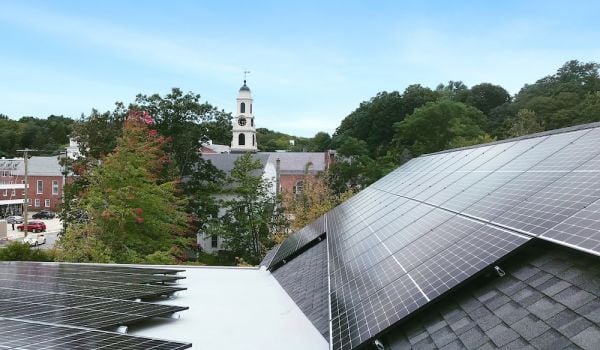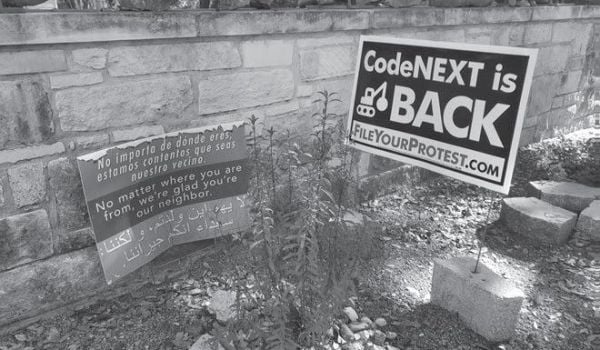It’s already about 90 degrees and sunny in Brownsville, Texas, says Francesca Linder. “And it’ll be in the 90s until November,” she says.
Linder handles zoning issues for the Gulf Coast city, perched on the U.S.-Mexico border. Brownsville is home to roughly 200,000 people and hosts a major port, and the city recently earned some recognition for its work to reduce obstacles to solar energy.
While Brownsville has a wealth of sunshine to tap into, it’s not a very affluent community.
“We don’t have very high income,” explains Linder. “So, one of the goals pushing forward with this was to try to lower local government energy use as well as to create a program in the future that could benefit low-income households and apartments.”
To facilitate the installation of solar systems in Brownsville, Linder explains, construction permits are still required for new projects, but the solar systems themselves will not require an extra permit. The program has only been operational for a year, but Linder is enthusiastic.
“There are so many doors that are going to open. I really think we’re going to see not just residential users adopt solar, but also commercial,” says Linder, who adds that since Brownsville also has a port, it’s likely solar energy will be a way of to meet the energy needs of warehouses serving the port.
So far, one apartment project has been approved, Linder says, though construction has yet to begin.
“Permitting can really be an issue for a lot of projects,” says Scott Annis, a who brings a city-planning perspective to his work at the International City/County Management Association. “[Permitting] can cost as much as $700 trying to get a single solar project onto a residential roof.”
With funding from the U.S. Department of Energy’s Solar Energy Technologies Office, the International City/County Management Association and The Solar Foundation jointly run a two-year old program called SolSmart. The program provides technical assistance for local governments to help them make it faster, easier, and more affordable to adopt solar energy solutions. Brownsville was designated a SolSmart “Silver City” because of its efforts to reduce obstacles for solar energy.
“Communities going through the SolSmart program and passing those savings on by just changing a few simple permitting issues is really impressive,” says Annis. “I think it really shows what local governments can do to create and foster sustainable communities by looking at what they can do to improve their regulations and possible red tape.”
Brownsville is one of 200 cities across the country that have earned a SolSmart designation. The states with the largest number of municipalities involved are Colorado and Illinois. (One of the reasons Illinois has so many SolSmart-designated cities is the state’s Future Energy Jobs Act, which passed in 2016. The legislation, according to the web site, aims to “position Illinois as a leader in zero-carbon electricity” and calls for investments of $180 million to $220 million for renewable energy investments.)
Under SolSmart, International City/County Management Association (ICMA) handles designations and awards while The Solar Foundation provides technical assistance to communities.
Zach Greene oversees the technical assistance that the Solar Foundation offers, in conjunction with other partners such as the National Renewable Energy Laboratory.
“We really focus on permitting and planning and zoning. Those are the two foundational areas that we really work with communities on from the outset of their engagement in the program,” Greene says. “I think one of the things most communities are interested in is actually installing solar on their municipal buildings. A lot of communities have come in with that being one of their goals over the long-term.”
Another area many SolSmart participants want to learn more about is community solar projects. With a community solar project, Greene explains, instead of installing an array on a family’s roof, a solar array would be installed on top of a large building or in a field nearby, and it wouldn’t have one single owner. Instead, individuals or businesses buy ownership shares of it, helping reduce each of their energy bills.
“It’s really great, for instance, for people who live in apartment buildings or for people whose roofs don’t allow for solar energy,” Greene says. “Or for a business that might not have space or the ability to install solar on their premises.”
When Brownsville began investigating how it could facilitate solar energy use, Greene was involved in the initial discussions.
“They have one of the best stories in the program. They’re one of those communities that started without any knowledge of solar energy, and they’ve really taken extreme strides into ensuring that they have really good processes in place and really good zoning ordinances in place,” Greene says. “They’re a prime example of what the program can do.”
To ensure that communities are able to maintain their momentum and commitment to solar energy, Annis says that ICMA will be launching a peer network for communities that are going through the designation process. While the communities will get support from ICMA and the Solar Foundation, they will also have the opportunity to learn from the challenges other municipalities have faced and how they resolved them.

Zoe Sullivan is a multimedia journalist and visual artist with experience on the U.S. Gulf Coast, Argentina, Brazil, and Kenya. Her radio work has appeared on outlets such as BBC, Marketplace, Radio France International, Free Speech Radio News and DW. Her writing has appeared on outlets such as The Guardian, Al Jazeera America and The Crisis.
Follow Zoe .(JavaScript must be enabled to view this email address)







_600_350_80_s_c1.jpg)








